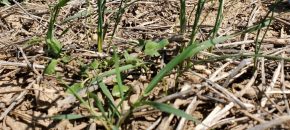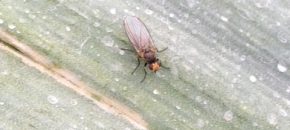Have you ever felt that you did everything right at controlling brown rot during the preharvest period, but still got a significant amount of brown rot at harvest? Your preharvest fungicide applications were at tight intervals during the roughly 21-day fruit ripening period. Rains occurred but you were protected. Even when you looked back at […]
Continue reading...Improving Your Early Season Peach Brown Rot Control Program – An Update
Wild garlic overly adundant plan now to prevent dockage

Wild garlic dominates cropland and pastures throughout Salem County this spring. A few observations of star-of-bethlehem are also noted. Due to the excessive rainfall last year, assume abundance of wild garlic bulbs are sprouting in small grains in fields known to have an infestation. Due to crop height and density, garlic leaves are difficult to […]
Continue reading...Pesticide Applicator or Dealer Storage Inventory with Cover Letter Due May 1st to Fire Department
All licensed pesticide applicators, as well as dealers, who store pesticides are required by law to send a copy of their storage inventor(ies) with an explanatory cover letter to the local fire company by May 1st each year. In New Jersey, all licensed … Read More »
Continue reading...Beef Cattle Management 101-Webinar Series
Session 1: April 19th -7:00 PM to 8:00 PM Changes and Updates to Relief Programs that Impact Farmers What Farmers Need to Know about Changes and Updates to the Latest Relief Bills Checklist for Calving Success. Presenters include: Dr. Robin Brumfield, Extension Specialist in Farm Management at Rutgers University Melissa Bravo, M.S. Assistant Professor, Rutgers […]
Continue reading...Preparing Orchards Against the Frost – Low Tech Strategies
Frost is common in the north-eastern US, however, frost events during bloom, specifically in orchard crops can be economically devastating. Often the cause is a few hours of temperatures below the injury threshold temperature for the developing buds as cooler nights result in the rapid loss of thermal energy. Fortunately, there are several passive methods […]
Continue reading...Allium leaf miner update: 04/06/21

Allium Leaf Miner Allium leaf miner (ALM) feeding/egg laying scars were detected in a large chive planting near Milford, Hunterdon County on Tuesday of this week. Feeding was very low (<0.5% of chive clusters), but several adults were observed in the planting. This indicates that the first (spring) flight of these flies has now begun […]
Continue reading...